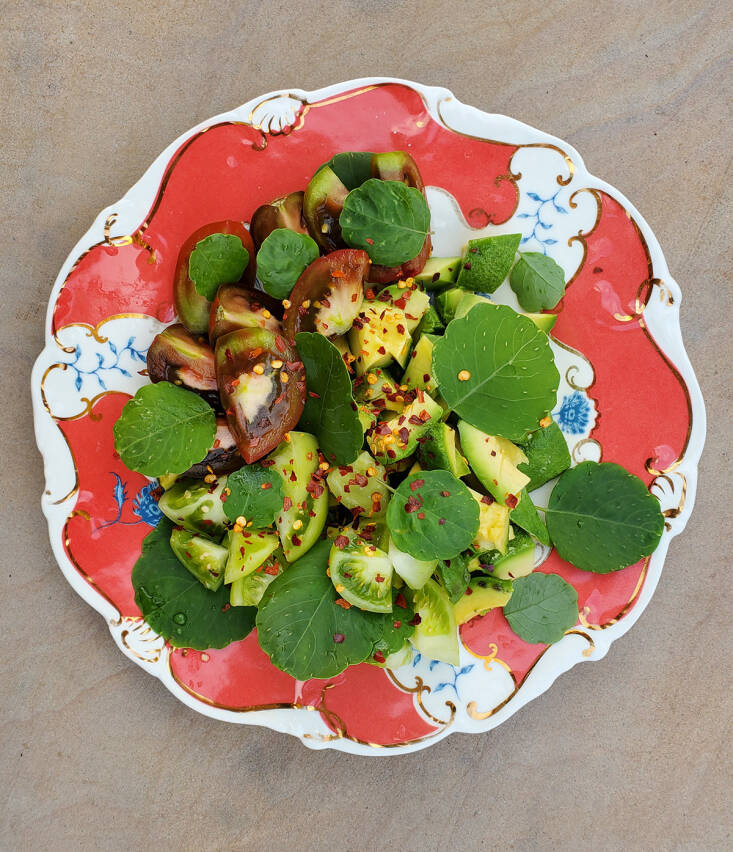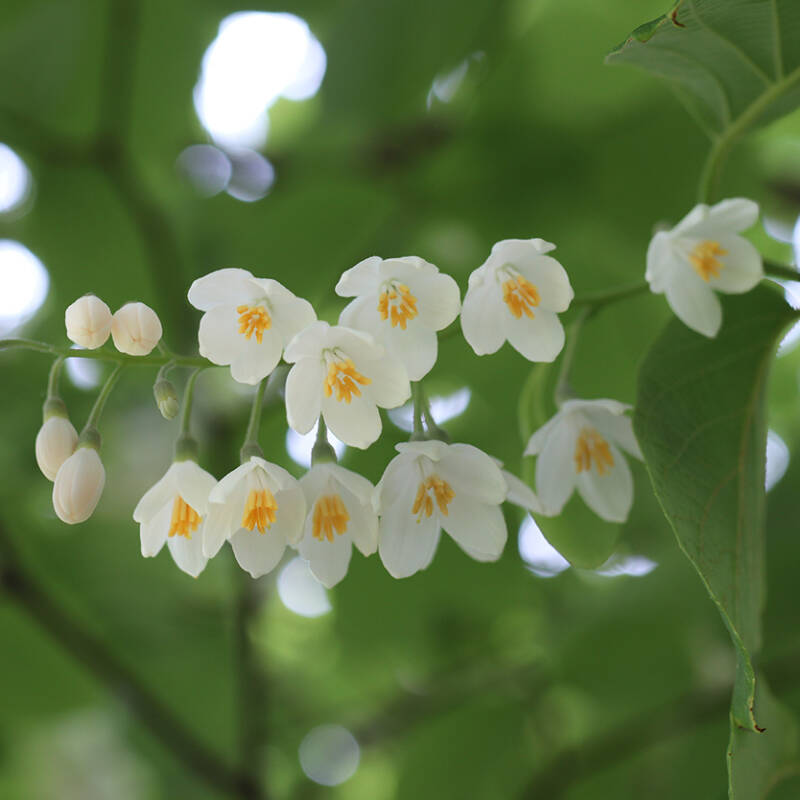One of the many pleasures of shopping in person at a brick-and-mortar nursery is the potential for surprise. Well-curated, ever-changing collections of plants will reward gardeners and cooks with the thrill of discovery. Visiting a nursery is not just about the plant you were looking for, but about the one you least expected to find. A casual browse can become a botanical treasure hunt, opening the fascinating doors of inquiry and introducing us to unfamiliar plants and their stories, and—if we are lucky—to their flavors. That is how I felt two summers ago, looking down at the unfamiliar scalloped leaves of a herb labeled “papalo.” The tray of skinny starter plants was nestled between young fennel, parsley , and oregano, on the gravel floor of the kitchen garden section of the Gowanus Nursery in Brooklyn. I bought three plants at once.
But what was papalo? And how was I going to use it?
Photography by Marie Viljoen.

Mexican friends quickly came to my rescue, explaining that the strongly-flavored leaves— reminiscent of cilantro, but also citrusy and delicately bitter—could be used to brighten tacos and to make tomatoes sing.

And I began to read. Some botanical stuff: Botanically, papalo is Porophyllum ruderale, a member of the Asteraceae family. Our specific plant is a variety—Porophyllum ruderale var. macrocephalum—on account of its wide leaves (others have slender leaves). Porophyllum (pore + leaf) is known as the pore-leaf genus, named for the visible glands on the underside of its foliage. The scent of papalo’s bruised leaves is penetrating and refreshing (it contains limonene and citronellal), and it is released even when one brushes against the plant. One friend explained that she finds it so soothing that she blends papalo leaves into a natural cleaning product just to enjoy their perfume.

While there are over two dozen species of Porophyllum, papalo and its subspecies are annual herbs whose native range is wide: from the North American Southwest through Mexico and Central and South America, where the plant favors higher altitudes and dry conditions, and flourishes after rain. It is also an urban weed (the species name ruderale refers to it favoring rubble and waste places—disturbed ground where the plant thrives). In Mexico it is one of the many quelites—wild edible plants; the common name papalo is from “papaloquelite”, the Nahuatl words* papalotl for butterfly, and quilitl—a catch-all term including all edible green things. Other frequently-used common names for the herb include yerba porosa, and quilciña, but there are dozens more, always a clue to how useful humans have found a plant to be.
*Source: The excellent botanical blog, Masa Americana.


Papalo can be used like cilantro (which is in fact native to Eurasia, but that’s another story), and its flavor profile is reminiscent of cilantro, too, but more piercing. Its pungent flavor is just as divisive as cilantro’s—you like it or loathe it. But unlike coriander, it does not bolt quickly; if you cherish that flavor spectrum, papalo might be your new favorite herb.

The clear, bright flavor of papalo and its silky texture pair well with other plants native to its broad range: Think raw acidic tomatoes, ripe and unripe mango, sweet corn, and creamy avocado—each an excellent foil in texture and flavor for the pungent leaves.

A few leaves added to fish tacos are delicious, and papalo is a palate-cleansing fresh relish for barbecued meats like lamb, or rich, slow-cooked pork shoulder or ribs.

Planted in-ground, papalo becomes statuesque, and can reach five feet. In pots it is more constrained (my own plants range from 18 inches to three feet tall, depending on the pot-size). More nurseries are beginning to stock papalo plants, usually available from late spring through summer. If you sow seeds instead, expect a fairly low germination rate, so sow more than you think you may need. Start indoors around your last frost date and transplant out only after nights are consistently above 50’F (around May, where I live in USDA zone 7b). Papalo likes full sun but grows well with morning sun and afternoon shade, too.
Papalo is now a part of my annual herb collection, and every summer I look forward to that first, bright bite.
For more unusual herbs, see:
- Summer Savory: The Herb Popular Everywhere but Here
- Sand Ginger: An Unusual Herb to Grow and Eat at Home
- The Indoor Bay Tree: Perfect Houseplant?









Have a Question or Comment About This Post?
Join the conversation